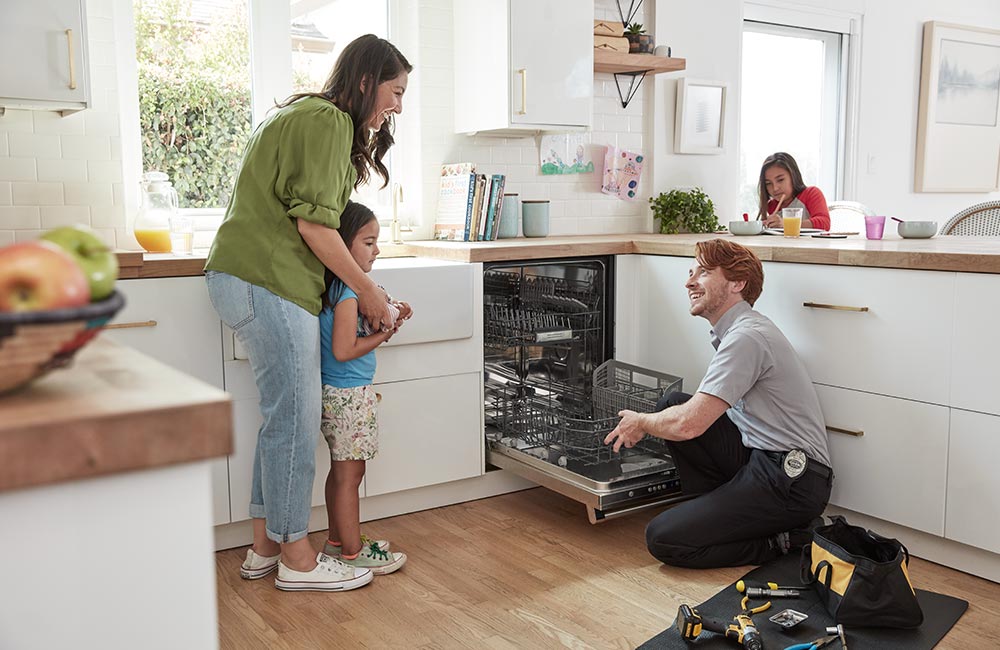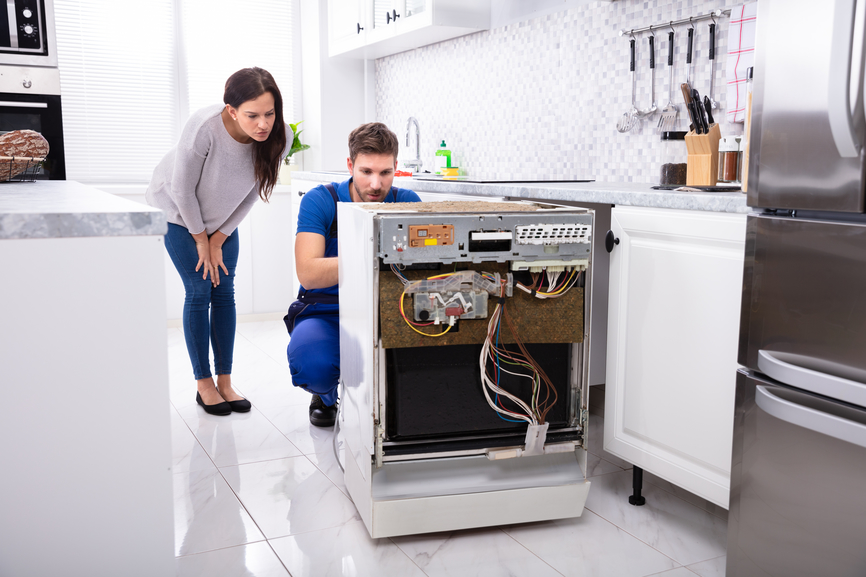The Ultimate Guide to Understanding Home Appliance Fixing in the house
When your fridge stops cooling or your oven refuses to heat, it can feel frustrating. Understanding device fixing at home can save you money and time. You'll find out to identify signs, make use of necessary devices, and comply with a systematic troubleshooting procedure. Yet before you start, there are critical safety and security precautions you require to take into consideration. What are the most common issues, and exactly how can you repair them? Let's check out the basics.
Common Device Issues and Their Signs
When your appliances begin acting up, it's vital to recognize the indicators at an early stage. Neglecting them can lead to bigger problems and pricey repairs. If your fridge isn't cooling appropriately, you could see warm places or condensation forming. This can show a falling short compressor or an obstructed vent.Your dish washer may show issues through dirty recipes or uncommon sounds during cycles. If you listen to grinding or clanking, it's time to investigate.A washing maker that will not spin or drain can leave you with soggy washing, recommending a clogged drainpipe or a malfunctioning pump.Lastly, if your oven's temperature level seems off or it takes permanently to preheat, you could be dealing with a defective thermostat. By staying sharp to these signs and symptoms, you can resolve issues prior to they escalate right into significant repair work.
Essential Devices for Device Repair Service
When you're taking on appliance repair work in your home, having the right tools is crucial. Basic hand tools like screwdrivers and pliers will aid you take apart and take care of numerous appliances, while electrical screening gadgets ensure you're working safely with circuitry. Let's review what you require to obtain started on your repair work journey.
Standard Hand Devices
Having the right devices is important for effective appliance fixing at home. Beginning with a trusted screwdriver collection, including both flathead and Phillips types, as screws are common in device setting up. Pliers are likewise important; they aid with gripping, turning, and reducing cables or small elements. A pair of needle-nose pliers can reach difficult situations quickly. You'll require an excellent flexible wrench for tightening up or loosening up nuts and bolts. An energy knife is handy for puncturing product packaging or insulation. Lastly, don't neglect a tough workbench or surface area to safely arrange your devices and parts. With these basic hand devices, you'll be well-prepared to deal with most device repair work that come your method.
Electrical Testing Tools
Together with basic hand devices, electrical testing gadgets play an essential function in device fixing. These devices aid you identify electrical concerns and guarantee home appliances operate securely. A multimeter is vital; it measures voltage, current, and resistance, allowing you to determine issues quickly. A non-contact voltage tester is one more must-have, letting you discover real-time wires without making direct get in touch with, enhancing your security. Secure meters are wonderful for measuring current circulation in cords without separating them, saving you time and effort. Furthermore, circuit testers can promptly check if outlets are functioning appropriately. By utilizing these tools, you'll streamline your troubleshooting procedure and improve your repair abilities, making home appliance upkeep a whole lot easier.
Step-by-Step Guide to Diagnosing Appliance Issues
When your home appliance acts up, it can be discouraging, yet diagnosing the problem does not need to be frustrating. You'll discover to determine usual troubles and apply reliable repairing strategies. Allow's walk through the actions to get your home appliance back in working order.
Typical Device Troubles

Repairing Methods Discussed

Repairing Major Kitchen Appliances: A Closer Look
Have you ever asked yourself just how to deal with common issues with your kitchen area appliances? Fixing significant kitchen area home appliances like refrigerators, ovens, and dishwashers can be much easier than you think. Beginning by determining the issue-- whether it's a fridge not cooling down or a stove that will not warm. Usually, a straightforward reset or inspecting the power resource can address the issue.For refrigerators, tidy the condenser coils and check the door seals. If your oven's not home heating, evaluate the home heating aspect and thermostat. Dishwashers might just require a tidy filter or a reset to obtain them back at work. Always disconnect the device before diving right into repairs to guarantee your safety.Don' t fail to remember to consult the customer guidebook for specific troubleshooting suggestions associated to your design. With a little bit of persistence and the right tools, you can with confidence deal with device fixings and conserve cash while doing so!

Fixing Laundry Devices: Tips and Techniques
When your laundry home appliances begin acting up, it can feel frustrating, but troubleshooting them doesn't have to be a hassle. Beginning by inspecting the power supply. Validate the device is connected in and the electrical outlet is functioning. Next off, check the door or lid switch; a malfunctioning button can protect against the equipment from operating.For washing machines, if it's not spinning, look for out of balance tons. Rearranging the clothes may fix the concern. If your clothes dryer isn't home heating, tidy the lint filter and examine the vent for blockages.Listen for unusual noises; they can indicate a trouble. If your appliance is leaking, examine the tubes for fractures or loosened connections. Record any kind of mistake codes displayed on digital screens, as they can direct you in determining the issue. Ultimately, get in touch with the individual manual for certain fixing ideas associated with your version.
Security Preventative Measures to Take During Fixes
Before you begin any kind of home appliance repair work, it's necessary to prioritize safety and security to avoid accidents or injuries. Initially, disconnect the device or shut off the breaker to guarantee no power reaches it while you function. Usage protected tools to lessen the danger of electric shock. Use safety goggles and gloves to secure yourself from sharp edges or debris (Maytag Washing machine repair Dependable Refrigeration & Appliance Repair Service).Make specific your work space is tidy and well-lit, so you can see what you're doing. Keep kids and family pets far from the area to avoid interruptions and potential threats. If you're dealing with gas appliances, be extra mindful; look for leaks prior to proceeding.Take your time, and do not rush via fixings. If you feel uncertain concerning any type of step, it's far better to stop briefly and study than to guess. Complying with these preventative measures will assist create a more secure setting for your DIY appliance repair service task
When to Call a Professional for Assistance
Exactly how do you understand if it's time to contact a professional for appliance repair work? If you've attempted fundamental troubleshooting without success, it's a clear sign. As an example, if your device still won't start or reveals unusual sounds after resetting it, do not wait to look for specialist help.When you notice leakages, smoke, or burning scents, prioritize safety and call a pro immediately. These concerns can result in even more considerable damages or present threats to your home.Also, if your device is under warranty, calling a professional is usually the very best route. They can guarantee that repairs will not invalidate your service warranty, saving you money in the long run.Finally, if you're unclear or awkward with complicated repair work, it's important to leave it to the specialists. Bear in mind, dealing with challenging problems without the appropriate expertise can result in pricey errors. Depend on a professional when in question!
Regularly Asked Concerns
Just How Can I Prevent Device Problems in the Future?
To stop appliance problems in the future, you must carry out normal maintenance, look for wear and tear, tidy filters, and stay clear of overloading. Staying proactive will certainly assist expand their life expectancy and keep them running smoothly.
What Are one of the most Usual DIY Home Appliance Repair Service Mistakes?
You could ignore safety preventative measures, miss repairing actions, or utilize wrong tools when attempting DIY appliance repair work. Hurrying the process or disregarding manufacturer guidelines can bring about even more considerable issues and pricey blunders. Keep individual and notified!
How Do I Know if a Component Needs Replacement?
You can tell if a component needs replacement by looking for unusual noises, leaks, or irregular efficiency. If the appliance battles to operate correctly or reveals noticeable damages, it's most likely time for a substitute.
Can I Use Generic Components for Home Appliance Fixes?
Yes, you can use website generic parts for appliance repairs, but identify they work - Lg Dryer repair near me Dependable Refrigeration & Appliance Repair Service. Generic components may conserve you cash, however they could impact performance or long life, so evaluate your options thoroughly prior to making a decision
What Warranties Cover Home Appliance Fixes?
Most home appliance warranties cover fixings for producing flaws, yet they usually exclude damages from abuse. Inspect your guarantee terms thoroughly, as some could require utilizing qualified technicians and initial parts for insurance coverage to continue to be legitimate.